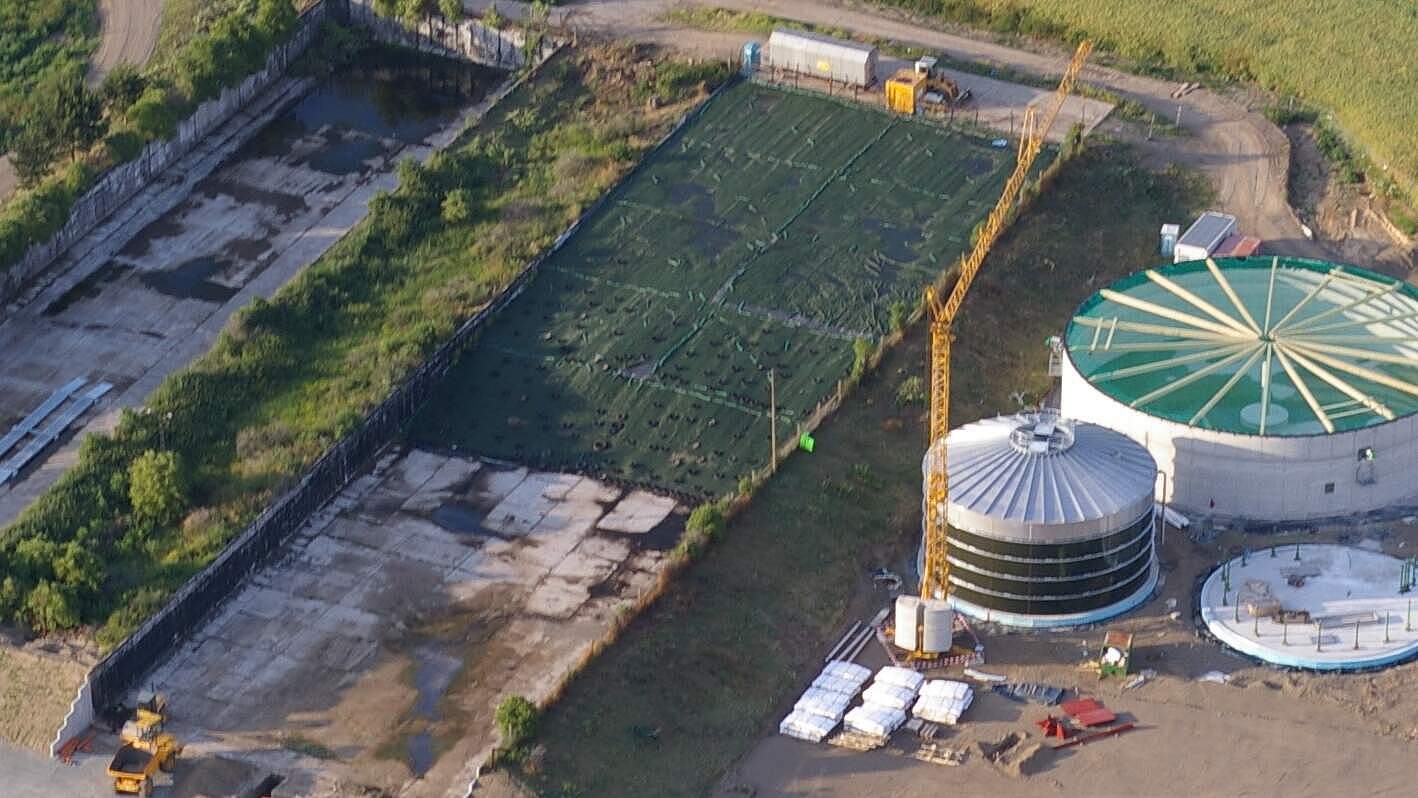What is Biogas?
Food chain, biogas is generated as a metabolite. At 50-85%, combustible methane, in addition to carbon dioxide, is a major constituent of biogas and is the actual renewable energy source. This natural decomposition process also takes place in anaerobic zones in the soil, in lakes and ponds, but also in tanks for sewage sludge and in landfills (landfill gas).
Therefore a biogas plant is a system for decentralised renewable energy generation.
What is Biomethane?
Biomethane (H2) (also known as RNG - renewable natural gas) is purified form of biogas that meets the quality standards for natural gas. It usually contains above 96% of methane and can be used as a natural gas substitute. Biomethane can be injected into the existing natural gas grid and used as a natural gas substitute for all end-user applications such as cooking, heating and cooling, power generation, transport, etc.
Using Biogas
Biogas is versatile and flexible. One cubic meter of biogas replaces approx. 0.6 l of heating oil. In contrast to solar and wind energy, which are dependent on weather conditions, biogas can be produced continuously and used to generate electricity and heat in the CHP unit as required. This independence enables not only a reliable base load supply, but also a needs-based energy supply. Biogas is therefore an environmentally friendly and sustainable form of energy production that balances out daily fluctuations in energy demand as well as in renewable energy production in energy grids. Thanks to its flexibility and scalability, operators can also run biogas plants decentrally, which also helps to relieve the burden on supra-regional power grids. Overall, biogas plays a key role in the renewable energy mix thanks to its properties.
- Biogas can be used as a renewable form of energy in a gas engine to generate renewable power and heat in cogeneration. A biogas plant can supply multiple satellite cogeneration plants (CHPs) via biogas pipes. The CHPs can be used at the heat requirement location. The power generated is fed into the power grid. The heat is used at regional level and can be distributed across a local heating network.
- Biogas can be processed to meet natural gas specifications and fed into the gas network in the form of biomethane.
- Biogas can be used as fuel for vehicles. Processing can reduce the volume.
- Of course, biogas can also be used in boilers for heating, for cooking or for light.
Alongside biogas, a digestate is left over in the form of fermentation residue, and this contains all the nutrients included in the substrate, as well as material that is resistant to degradation. In most instances, therefore, the digestate is ideal as fertiliser and is used as a high-quality substitute for mineral fertiliser.
(...)
Tailor-made biogas concepts
| ✓ | Tailor-made planning and construction according to HOAI |
| ✓ | Integrated concept for your biogas plant |
| ✓ | Energy-efficient pre-treatment of your substrate |
| ✓ | Tailor-made process chain for the treatment of your substrate |
| ✓ | Tailor-made fermentation processes |
| ✓ | Optimised composition of components and units |
| ✓ | High level of safety technology |
| ✓ | Tenders to identify the best suppliers |
| ✓ | Construction supervision and commissioning |

![[Translate to English:] Panorama Biogasanlage Dinteloord](/fileadmin/_processed_/6/7/csm_Dinteloord_Biogasanlage_800x200_9b09cdf979.jpg)
![[Translate to English:] Panorama Biogasnalage Anklam](/fileadmin/_processed_/d/9/csm_1731Anklamgesamt_800x200_7a54f43722.jpg)
